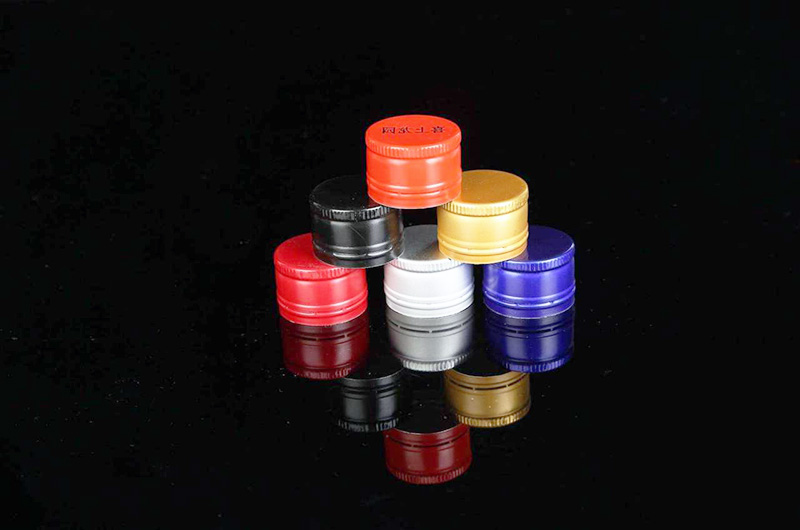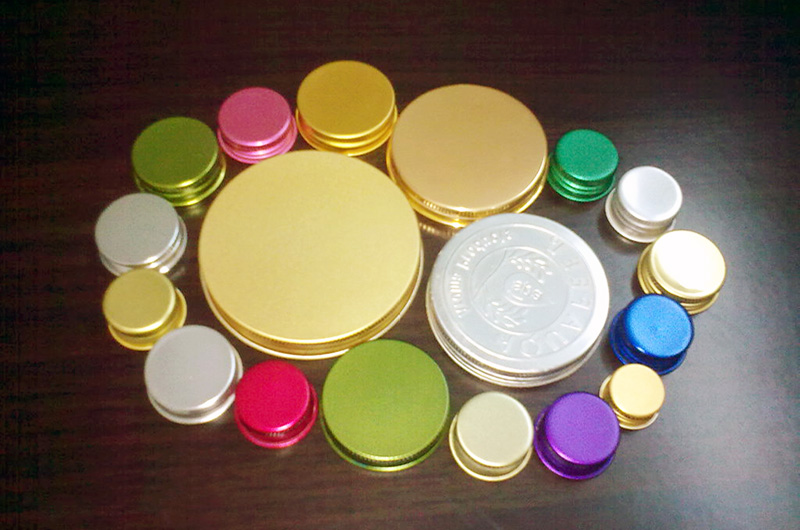Quality control factors of aluminium bottle cap sheet material
Last Updated :Apr. 01, 2024
Quality control factors for aluminum bottle cap sheets are critical to ensuring the integrity, safety and performance of the final product. Aluminum bottle caps are widely used in the packaging industry due to their lightweight, corrosion resistance, and recyclability.

1. Aluminum bottle cap sheet raw materials
- 1. Requirements for plate-type aluminum bottle caps: central convexity 0.2-0.8%, longitudinal thickness no more than 0.1mm.
- 2. Surface quality: no cracks, bubbles, pores, corrosion, peeling, periodic indentation, metal and non-metal pressing, viscose aluminum, light and dark stripes, etc.
2. Chemical composition
The composition of the aluminum alloy used in bottle cap sheets greatly affects its mechanical properties, such as strength, ductility and corrosion resistance. Quality control measures should ensure that alloy composition complies with specified standards and tolerances.
3. Surface finish
The surface finish of aluminum panels is critical to ensure proper adhesion of coatings, such as varnishes or polymer films, and to achieve a smooth, aesthetic appearance. Quality control inspections should include an assessment of surface roughness, cleanliness and the presence of defects such as scratches or dents.
4. Thickness tolerance
Consistent thickness is critical to ensuring uniformity and reliability of cap material. The quality control process should include measuring the thickness of the sheet at different points and strictly adhering to the specified tolerances.
5. Mechanical properties
Mechanical properties, including tensile strength, yield strength, elongation and hardness, are key indicators of material performance and suitability for intended applications. Quality control testing should verify that the material meets the required mechanical property specifications.
6. Chemical composition and purity
Impurities and alloying elements can affect the properties and performance of materials. Quality control measures should include chemical analysis to ensure that the aluminum meets purity standards and that alloying elements are within specified limits.

7. Surface coating adhesion
Aluminum bottle cap sheets are often coated with a protective or decorative finish to enhance their performance and appearance. Quality control inspections should evaluate the adhesion strength of these coatings to ensure they adhere securely to the substrate and prevent peeling or delamination.
8. Dimensional accuracy
The dimensional accuracy of the cap sheet material is critical to ensuring the correct fit and functionality of the final product. Quality control processes should verify dimensional tolerances on features such as diameter, height, and thickness.
9. Surface appearance
The appearance of aluminum panels, including color, gloss and absence of defects such as stains or blemishes, is important for aesthetics and brand recognition. Quality control checks should ensure that surface appearance meets required standards.
10. Corrosion resistance
Aluminum's natural corrosion resistance is enhanced through surface treatments and coatings. Quality control testing should evaluate the corrosion resistance of materials under various environmental conditions to ensure long-term durability and product reliability.
11. Aluminum cover sealing rolling process
- 1. When cutting, remove surface dust, cut off the bad parts at the end of the material, wipe the exit side plate roller, guide roller, etc. in each pass to keep the guide roller clean; the lifting speed should be in place immediately.
- 2. The oil temperature of process lubricating oil should be maintained at 35-50°C, the working pressure should be above 0.55Mpa, and the oil permeability should be above 90%.
- 3. Adjust the position of the air outlet splash plate to ensure the air outlet oil removal effect.
- 4. The roughness of the finished roll is 0.35-0.4m, and the thickness difference of the finished product is controlled at +/-0.005m.
- 5. The coiling bottom should be flat and without deflection or sharp protrusions, and the finished road surface must be smooth. No paddles, marks, oil, black lines, bright lines, roll marks, or layers are allowed on the surface.
- 6. Check the surface quality at least once every 3 rolls, and check the surface quality of the finished product every roll.
- 7. After the finished product is qualified, take samples (transverse, longitudinal, 45 degrees) and send them to the laboratory for inspection of tensile strength, yield strength, elongation and ear testing.
12. Packaging and Handling
Proper packaging and handling during shipping and storage is critical to preventing damage or contamination that could affect the quality of the cap sheet material. Quality control procedures should include checking for appropriate packaging materials and handling methods.
By implementing strict quality control measures for aluminum bottle cap sheets, manufacturers can ensure that their products meet the highest standards of quality, performance and reliability to meet customer requirements and regulatory expectations.

